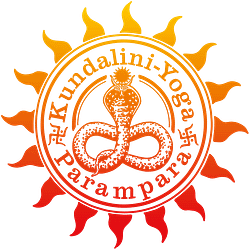
This is not about modern Yoga, but about the ancestral tradition from the Himalayas, whose origins go far back into pre-Vedic times. It has been handed down since time immemorial to those who wish to devote themselves to it completely and who are not afraid of either effort or obstacles. The methods shown may seem simple and unspectacular at first glance, but they are extremely effective, contain a certain potential for danger and place high demands on the practitioner. If they are practised without the necessary attention and caution, they can cause harm instead of benefit. Students should take the teacher’s warnings seriously and always proceed slowly and mindfully. Whether in seminars, classes or at home, one should be aware of certain risks and practice accordingly with devotion. Hatha-Yoga is one of the most powerful systems of transformation and self-realisation, and one should listen to the voices of the ancient masters, follow the rules, progress slowly and be ready to take personal responsibility to attain the sweet fruits of the higher levels of Yoga.
Authentic Hatha-Yoga is a mind-body discipline that goes by various names in the Yoga scriptures, such as Kundalini-Yoga, Ashtanga-Yoga, Raja-Yoga or even Laya-Yoga. The aim is to bring the intellect, the senses and the emotions into harmonious interaction through the gradual development of the human personality, so that man can attain self-knowledge through the expansion of his consciousness.
For this purpose, archaic techniques and procedures are used that enable the practitioner to reach the higher levels of meditation. This demanding process of development is summarised under the name Ashtanga-Yoga (Eightfold Yoga Path):
1. Yama, the rules of social behaviour
2. Niyama, the code of personal conduct
3. Asana, postures
4. Pranayama, rhythmic breathing and control of the life force
5. Pratyahara, detachment of the senses from the external world
6. Dharana, concentration
7. Dhyana, contemplation and meditation
8. Samadhi, self-realisation or enlightenment
By igniting subtle energies in the human body, the mystical serpentine force is awakened, revered by Yogis as Kundalini-Shakti. This mysterious energy, dormant in the depths of our subconscious, is the key to understanding the interconnectedness of body, mind, soul, world and cosmos.
In the Yoga-Shastra, the text books of Hatha-Yoga, the practices used for this profound process are mentioned. They are described and illustrated in detail in the book Kundalini-Yoga-Parampara: The Living Tradition of Kundalini-Yoga:
- Sukshma and Sthula Vyayama (subtle physical exercises)
- Shat-Karma (purification exercises)
- Asana (yoga postures)
- Pranayama (breathing techniques)
- Mudra and bandha (Yogic seals and closures)

